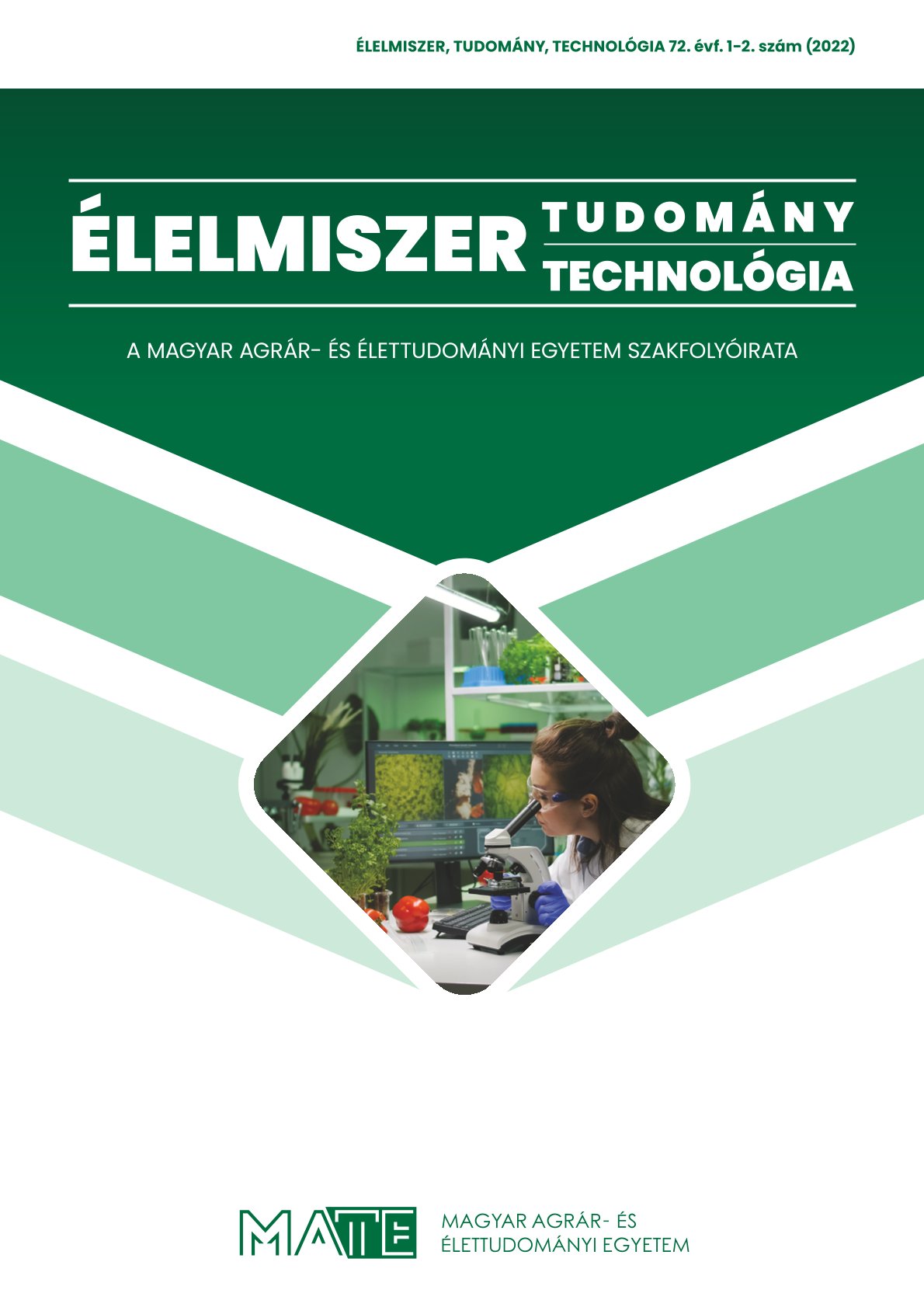Investigation of quinoa flour based pasta enriched with sweet potato flour
Keywords:
sweet potato, quinoa, dry pastaAbstract
The aim of the research was to develop a dry pasta made from alternative flour and enriched with vegetable flour, then to increase the water-soluble antioxidant content of the pasta. We made three dry pasta, each containing different proportion of the ingredients. The ingredients were quinoa flour, sweet potato flour, cognac flour, and water. During our examination we examined the flours, the mixtures of flours, the dry pasta and the cooked pasta. The water-soluble antioxidant capacity of the samples was determined by the FRAP (Ferric reducing ability of plasma) assay, which is based on the iron-reducing ability of the samples. For the sensory qualification we did the sensory qualification for flavored and fortified dry pasta according to the MSZ 20050/3-83 standard, and we also did a JAR (just about right) optimum scale rating, which we evaluated with the Penalty Analysis extension. As a result, it was observed that the increase of the water-soluble antioxidant capacity was successful in the samples containing the most sweet potato flour, and the cooked pasta showed a higher value compared to the dry pasta. The result of the sensory qualification shows that the pasta with 30% sweet potato flour content received the best rating.
References
Alvarez-Jubete, L., Arendt, E.K., Gallagher, E. (2009): Nutritive value and chemical composition of pseudocereals as gluten-free ingredients. International Journal of Food Sciences and Nutrition, 60(4):240–257. https://doi.org/10.1080/09637480902950597
Arendt, E.K., Zannini, E. (2013): Quinoa. Cereal grains for the food and beverage industries, 409–438. https://doi.org/10.1533/9780857098924.409
Benzie, I., Strain, J. (1996): The Ferric Reducing Ability of Plasma (FRAP) as a measure of “antioxidant power: The FRAP Assay”. Analytical Biochemistry, 239:70-76. https://doi.org/10.1006/abio.1996.0292
Dolinsky, M., Agostinho, C., Ribeiro, D., Rocha, G.D.S., Barroso, S.G., Ferreira, D., … Fialho, E. (2015): Effect of different cooking methods on the polyphenol concentration and antioxidant capacity of selected vegetables. Journal of Culinary Science & Technology, 14(1):1–12. https://doi.org/10.1080/15428052.2015.1058203
Lu, G., Gao, Q. (2011): Use of sweet potato in bread and flour fortification. Flour and breads and their fortification in Health and Disease Prevention, 407–416. https://doi.org/10.1016/b978-0-12-380886-8.10037-6
Magyar Élelmiszerkönyv 2-321 számú irányelve (2019, 5. kiadás) MSZ 20500/1-85. Száraztészták vizsgálati módszerei, 1. rész. Fizikai vizsgálatok MSZ 20500/3-85. Száraztészták vizsgálati módszerei, 3. rész. Érzékszervi tulajdonságok vizsgálata
Mu, T.-H., Singh, J. (2019): Sweet potato: chemistry, processing, and nutrition—an introduction. Sweet Potato, 1–4. https://doi.org/10.1016/b978-0-12-813637-9.00001-6
Pellegrini, N., Miglio, C., Del Rio, D., Salvatore, S., Serafini, M., Brighenti, F. (2009): Effect of domestic cooking methods on the total antioxidant capacity of vegetables. International Journal of Food Sciences and Nutrition, 60(2):12–22. https://doi.org/10.1080/09637480802175212
Downloads
Published
Issue
Section
License
Copyright (c) 2022 Kreszadló Luca, Soós Anita, Szedljak Ildikó Judit

This work is licensed under a Creative Commons Attribution-NonCommercial-NoDerivatives 4.0 International License.


